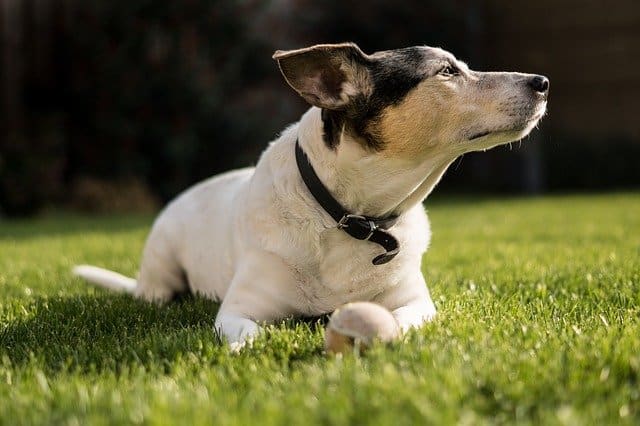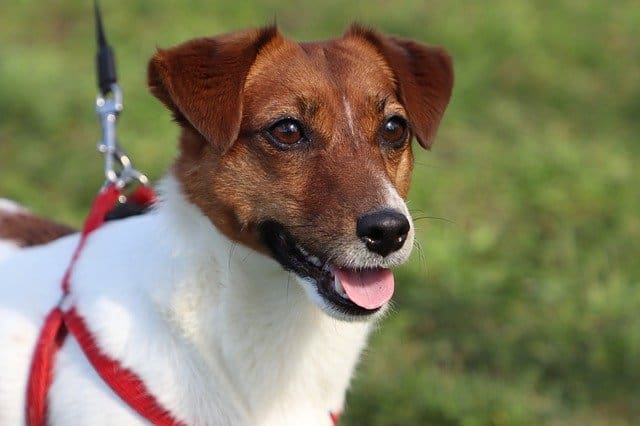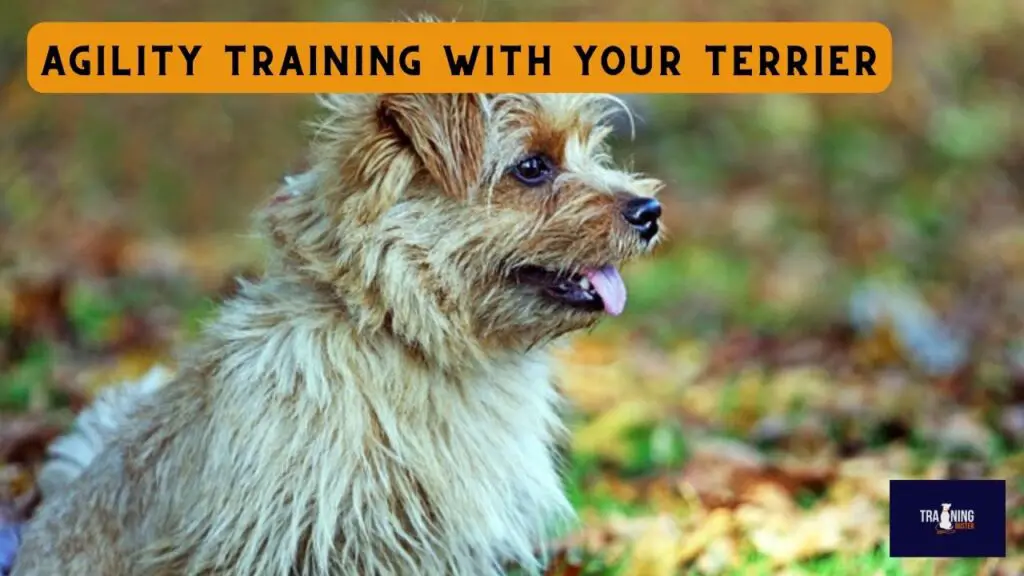
The Jack Russell Terrier has to be the world’s secret favorite dog. Who can resist that one-of-a-kind Jack smile and the limitless energy that allows the Jack Russell to go, go, go, all day long?
Jack Russells are bred to be hunting dogs and are good guide dogs or seeing dogs. In training, these Jack Russells memorise the routes a blind person takes every day and help the person navigate these busy routes with greater safety and confidence.
But what are Jack Russells bred for? Where does the Jack Russell get its unique traits and personality? Why does the Jack Russell look the way it does? And what kind of jobs do Jack Russells do today?
In this article, you’ll find the answers to all of these questions and more. So, if you can’t wait to find out more about your favourite dog, read on!
What does a Jack Russell look like?
The Jack Russell Terrier is a small dog with a predominantly white coat. Some Jack Russells have a purely white coat, while others sport a white coat with black or tan markings, or even both (tricolor)!
Jack Russells can have two main coat types: a short ‘smooth’ coat and a longer ‘broken’ one. The broken coat gives the Jack Russell a small beard and set of eyebrows. A few Jack Russells even have a ‘rough’ coat, which is a little longer than the broken one.
Why are Jack Russells white?
After centuries of breeding, all Jack Russell Terriers have ended up with a mainly white coat. Why is this? Does this snowy coat serve some historical purpose, or does the snowy fleece just look lovely?
Well, as any JRT fan will tell you, the Jack Russell indeed showcases a truly stunning coat. But, there is more to their coat than this. The Jack Russell Terrier breed was created for the primary purpose of hunting alongside hounds. A Jack Russell would bolt foxes out of their dens for the hound dogs to chase after.
As you might imagine, this meant early Jack Russells were forever going in and out of fox dens. However, this often meant that Jack Russell Terriers with large tan or black markings were accidentally shot at.
So, breeders made sure that Jack Russells going forward would have only small markings for the dogs’ own safety.
How does the Jack Russell act?
Today’s Jack Russells are just as boisterous and sociable with the breed’s extensive history as a hunting dog. Jack Russell Terriers are generally friendly towards most people.
But unfortunately, a Jack Russell typically tends to dislike most other dogs, except for other terriers. Jack Russells will often fearlessly (and stupidly) chase and attack most other dogs, no matter what the size!
Speaking of chasing, Jack Russell’s hunting history also drives the breed to tirelessly hunt down and destroy any moving object that remotely resembles the dog’s original prey.
This includes the neighbor’s cat, the kids’ remote control car, garden birds, the family gerbil or hamster, and sometimes even shadows and pieces of dust when a JRT is especially bored!
Many owners even report that their Jack Russell scales fences and tall trees and swims across frigid rivers in pursuit of that tantalizing squirrel, not looking back even once as their name is called uselessly!
So, as you can see, early and proper socialization is vital if you want to prevent these negative behaviors. But, on the other hand, a well-socialized JRT can live in harmony with cats and Guinea Pigs and will stick by your side during even the most enticing squirrel-laden forest walk.
Why is the breed called “Jack Russell”?
Dogs like the American Bulldog, Yorkie or Border Collie are named after places, while dogs like the Cavalier King Charles Spaniel and Doberman are named after the people who bred the dog or helped develop the breed. So, which kind of dog is the Jack Russell Terrier?
You guessed it – the Jack Russell Terrier breed is named after the South English church Parson, John “Jack” Russell. Like many Parsons around 200 years ago, John was an avid hunter and wanted to develop a new hunting dog to come with him on his own hunting trips. So, Parson John went ahead and designed a new dog breed that suited him down to a T.
Do Jack Russells like horses?
Absolutely! Nobody is quite sure why, but Jack Russell Terriers always seem to have a thing about horses. There is many a tale of stable owners bringing up a litter of complete Jack Russell terrors, only to turn around one day and find all the puppies trotting orderly and sensibly behind one of the horses.
Many Jack Russell Terriers even follow along during the horses’ training sessions. One Jack Russell, named Dally, rides horses!
Or maybe it’s more horse people having a thing for breeding Jack Russells? Plenty of horse owners adore these tiny feisty bundles of unbridled canine energy! At any event even remotely relating to horses, you can bet you’ll always find at least one Jack Russell in attendance.
So, many people who breed horses also breed Jack Russells to perform alongside their horses.
Do Jack Russells make good assistance dogs?
Okay, so Jack Russells were originally intended to be hunting dogs. But, as we’ve detailed, this is not the only thing the Jack Russell Terrier is good at. There are loads of Jack Russells on TV, performing with horses, and taking awards for several dog sports.
So, clearly this dog can do anything with the right training. Providing service and assistance is no exception.
There are loads of Jack Russell trained and bred to be hearing dogs. These Jack Russells nudge and paw at their owner urgently whenever they hear sounds like the doorbell, oven, smoke alarms and alarm clocks, the phone, a crying baby, cars, or anything else necessary.
With that hunting attentiveness and natural curiosity, Jack Russell Terriers excel at this! In fact, many Jack Russells train themselves to alert their owners to anything they find interesting.
Plenty of Jack Russells are also bred to be guide dogs or seeing dogs. In training, these Jack Russells memorise the routes a blind person takes every day and help the person navigate these busy routes with greater safety and confidence. These JRTs may guide a person safely to school, work, or the local store. These pooches may also help the person find objects in buildings.


